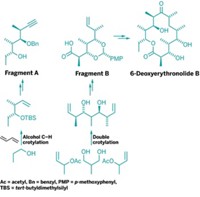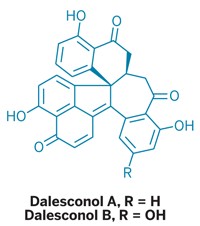Advertisement
Grab your lab coat. Let's get started
Welcome!
Welcome!
Create an account below to get 6 C&EN articles per month, receive newsletters and more - all free.
It seems this is your first time logging in online. Please enter the following information to continue.
As an ACS member you automatically get access to this site. All we need is few more details to create your reading experience.
Not you? Sign in with a different account.
Not you? Sign in with a different account.
ERROR 1
ERROR 1
ERROR 2
ERROR 2
ERROR 2
ERROR 2
ERROR 2
Password and Confirm password must match.
If you have an ACS member number, please enter it here so we can link this account to your membership. (optional)
ERROR 2
ACS values your privacy. By submitting your information, you are gaining access to C&EN and subscribing to our weekly newsletter. We use the information you provide to make your reading experience better, and we will never sell your data to third party members.
Physical Chemistry
Azadirachtin At Last
After more than two decades, chemists succeed at making complex natural product
by Bethany Halford
August 20, 2007
| A version of this story appeared in
Volume 85, Issue 34
IT TOOK 22 YEARS and the efforts of more than 40 chemists, but Steven V. Ley's group has finally managed to complete a 64-step synthesis of azadirachtin, a naturally occurring insecticide (Angew. Chem. Int. Ed., DOI: 10.1002/anie.200703027 and 10.1002/anie.200703028).
Isolated from the Indian neem tree Azadirachta indica, azadirachtin possesses a small but densely functionalized architecture. It has 16 stereogenic centers, seven of which are tetrasubstituted, and a diverse array of oxygenated functionalities.
"This has been a tough project from start to finish, as the molecule is so prone to rearrangement under acidic, basic, or photolytic conditions," says Ley, a chemistry professor at England's Cambridge University. "It has forced us to be inventive."
Of the many hurdles the researchers had to overcome, Ley reckons the most challenging was coupling the molecule's two main fragments. After years of attempts at this convergent approach, the group was finally able to marry these two fragments by means of a propargylic enol ether Claisen reaction. The next step, a radical-induced cyclization, elegantly constructed one sterically dense portion of the molecule.
"Making a molecule such as this is not an Everest-climbing exercise; it's about what you learn from the experience," Ley says. "We can be proud of the new methods and solutions to the tough problems we have encountered, and now we have the tools and procedures to really work out how this molecule functions biologically."
Amos B. Smith III, a chemistry professor at the University of Pennsylvania, calls the work "an outstanding achievement, further demonstrating Ley and colleagues as superb tacticians in the art of complex-molecule total synthesis."
Smith adds: "More important than the actual conquest is the exciting new chemistry that has emanated over the past 22 years from the Ley and other laboratories who have participated in this monumental challenge. Clearly, the science of synthesis is the winner."








Join the conversation
Contact the reporter
Submit a Letter to the Editor for publication
Engage with us on Twitter